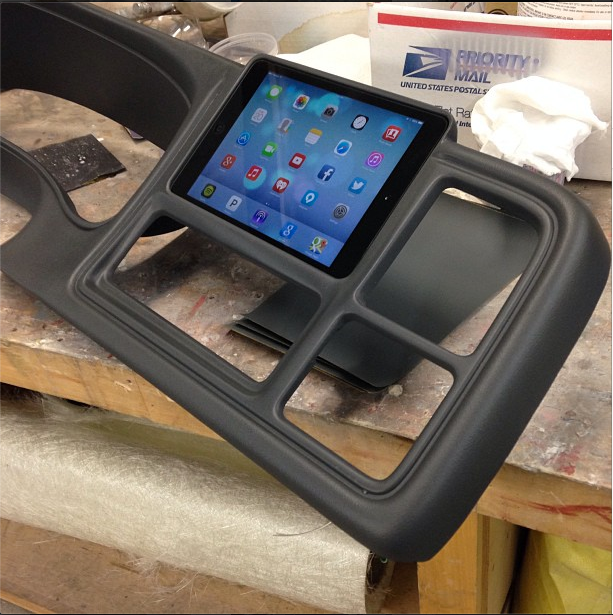My RCLB (SB eventually) build thread
- Thread starter Cornell
- Start date
You are using an out of date browser. It may not display this or other websites correctly.
You should upgrade or use an alternative browser.
You should upgrade or use an alternative browser.
Well I've been racking my brain like a fricken moron with the wiring on the C1 connector from the suburban that goes under the fuse block. So I pulled the cover off my Crew cab to see what I did wrong. Besides there being 4 extra orange power wires it was all correct. (Truck would start for a split second then shut off.) So I figured it was something with the ECU since I wasn't getting any codes.
Then I thought that since I used the BCM out of the suburban I better try and swap the BCM from the regular cab back in. Well the truck runs for about 3-5 seconds now and throws a P1631 Theft Deterrent Code. Should I do the relearn sequence? And should I use the Suburban BCM so that I don't have to get the stock radio unlocked vs. using the Duramax BCM and then the radio will be locked out?
The reason it isn't starting now I believe is because the immobilizer on the steering column is out of the Suburban because I used the Burb's steering column.
I rewired the C100 connector correctly as well. Added the GM High Speed LAN + and - wires along with the Wait to start wire from the cluster. I think I already said that though.
This is from ALLDATA
Since I don't have a Tech II I need to do the 30 minute relearn I believe:
Then I thought that since I used the BCM out of the suburban I better try and swap the BCM from the regular cab back in. Well the truck runs for about 3-5 seconds now and throws a P1631 Theft Deterrent Code. Should I do the relearn sequence? And should I use the Suburban BCM so that I don't have to get the stock radio unlocked vs. using the Duramax BCM and then the radio will be locked out?
The reason it isn't starting now I believe is because the immobilizer on the steering column is out of the Suburban because I used the Burb's steering column.
I rewired the C100 connector correctly as well. Added the GM High Speed LAN + and - wires along with the Wait to start wire from the cluster. I think I already said that though.
This is from ALLDATA
DTC P1631
Circuit Description
The class 2 serial data circuit is used in order to communicate between the powertrain control module (PCM) and the vehicle theft deterrent (VTD) body control module (BCM) systems.
When the Passlock portion of the VTD system has sensed the proper operation of the ignition switch and lock, or determined that the switch and lock have not been tampered with, the BCM transmits a password to the PCM. Fuel delivery is enabled if this password matches the password stored in the modules memory. If a component in the theft deterrent system has been replaced, the modules need to relearn the password of the new components. If the relearn procedure was not performed, this DTC will set.
If a VTD failure occurs during an ignition cycle that the PCM has enabled fuel, then the BCM will enter a fail-safe mode: Fail Enable VTD System Failure with Fuel Enabled. The BCM remains in Fail Enable Mode, for the current and future ignition cycles, until the fault is corrected and a valid password is received, or until battery power is removed. If the battery is disconnected or the codes are cleared, the vehicle will lose its Fail Enable status and will not start until the fault is corrected, the 10-minute timer expires, and the PCM receives the correct fuel delivery password.
DTC Descriptor
This diagnostic procedure supports the following DTC:
DTC P1631 Theft Deterrent Fuel Enable Signal Not Correct
Conditions for Running the DTC
DTC P1626 is not active.
The PCM is not in Password Learn mode.
The VTD Passlock system is enabled.
The fuel enable decision point has been reached, or the engine is cranking.
Conditions for Setting the DTC
The PCM did not receive a valid password before the fuel disable decision point was reached.
Action Taken When the DTC Sets
The PCM stores the DTC in history after the first failure but will not illuminate the malfunction indicator lamp (MIL).
The PCM records the operating conditions at the time the diagnostic fails. The PCM stores the failure information in the scan tool Freeze Frame/Failure Records.
Conditions for Clearing the MIL/DTC
A history DTC will clear if no fault conditions have been detected for 40 warm-up cycles.
A warm-up cycle occurs when the coolant temperature has risen 22°C (40°F) from the start-up coolant temperature and the engine coolant temperature (ECT) exceeds 70°C (160°F) during the same ignition cycle.
Use the scan tool Clear Information function.
Diagnostic Aids
Important: Do not clear DTCs unless directed by a diagnostic procedure. Clearing DTCs will also clear valuable Freeze Frame and Failure Records data.
If the PCM is replaced, the PCM must re-learn a valid password and crankshaft variation.
If the BCM is replaced, the PCM must re-learn a valid password.
Check for published service bulletins relating to exhibited symptoms or component operation.
If the vehicle does not start, or starts and stalls:
Turn OFF the ignition and wait at least 5 seconds before trying to restart.
If a fault or tamper has been detected, the BCM will not forward the correct password to the PCM for a period of 10 minutes , even if the condition is corrected during that time period. This may cause a DTC P1631 to set in the PCM. This timer can be monitored in the Passlock Data parameter of the scan tool. Once the time has elapsed, the BCM will determine if the condition is still present.
The PCM and BCM parameters can be monitored with a scan tool.
The Passlock state and the auto learn timer can be viewed in the Passlock Data parameter of the scan tool.
Inspect the following for preventing the Passlock sensor from communicating with the BCM:
Passlock sensor
Ignition switch assembly
Passlock sensor circuitry
Bent pins at the small Passlock sensor
If this DTC sets along with a DTC B2960, then the problem was caused by malfunctioning Passlock components or circuitry, not the PCM.
Inspect all related wiring and connections including the PCM and BCM connections. These may cause an intermittent malfunction.
An intermittent may be caused by any of the following conditions:
A poor connection
Rubbed through wire insulation
A broken wire inside the insulation
Thoroughly inspect any circuitry that is suspected of causing the intermittent complaint. Refer to Testing for Intermittent Conditions and Poor Connections. See: Testing and Inspection\Component Tests and General Diagnostics
If a repair is necessary, Refer to Wiring Repairs or Connector Repairs.
Since I don't have a Tech II I need to do the 30 minute relearn I believe:
30-Minute Learn Procedure
Turn ON the ignition, with the engine OFF.
Attempt to start the engine, then release the key to ON, vehicle will not start.
Observe the SECURITY telltale. After approximately 10 minutes , the telltale will turn OFF.
Turn OFF the ignition, and wait 5 seconds .
Repeat steps 1 through 4 two more times for a total of 3 cycles/30 minutes . The vehicle is now ready to relearn the Passlock(TM) Sensor Data Code and/or passwords on the next ignition switch transition from OFF to CRANK.
You can write your EFI Live tunes so that the relearn sequence is reduced to minutes. Forgive me because I don't remember exactly how to but I do know the sequence can be reduced with EFI Live. :thumb:
You can write your EFI Live tunes so that the relearn sequence is reduced to minutes. Forgive me because I don't remember exactly how to but I do know the sequence can be reduced with EFI Live. :thumb:
Hrrrm... going to try it the 30 minute way first since I have a bunch of other things to do with the truck. I don't want to throw a monkey wrench into my clusterf**k I already have :rofl: :rofl: :rofl:
You can do a VIN relearn and reset the security on your truck with EFILive. No need to do the key cycle thing.
Ah, well I was working on putting the rest of my interior back in while I was doing the relearn.
It worked! :hug: So glad that it did.
Good to hear! Does this new interior have the steering wheel controls and such?
Yep it's got the steering wheel controls.
I have to get the cluster flashed to add the function of the bottom buttons though.
Very sharp truck man!:thumb:
Thanks! It's getting there. The outside needs a few things (New rear bumper after I backed into a jersey barrier on a jobsite at night this summer.) Candy tails, backup lights and some leds. Maybe some sort of power steps.
sick truck :thumb:
Wish i could take on a project like this, I just dont have the time, knowledge, or patience. :roflmao:
Sure ya do! Or you just have other hobbies :spit:
Some stuff I ordered is starting to show up.
I bought this ipad mini mount so I can modify my dash piece so I can have an ipad mini for a headunit.
http://shop.soundmanca.com/new-ipad-mini-side-slider™-kit/dp/14

I also ordered a 1/0 gauge amp kit for the truck, steering wheel controls interface and a Sony MEX-GS600BT since they have an app for the ipad that lets you control the headunit through the ipad. Going to recess the headunit behind the ipad.
Powerwashed my spare dash pad today to get the dye off of it. Going to prime it and start sanding my interior stuff soon. It's all getting painted gloss black along with the top of the center console after I mold a subwoofer and enclosure into the back of it. Maybe the Diamond Tricoat black pearl that comes on some caddys. Haven't decided yet.
I converted my DRL to another signal bulb so it functions like this:
http://www.youtube.com/watch?v=vQeoiIzldSw
Same as the Crew cab.
Also converted the Suburban fogs (I think they were 880's) to 9005's. I've got 9005 Cree 5W 400 lumen bulbs coming just for colormatching purposes. to match the switchbacks and HID's










